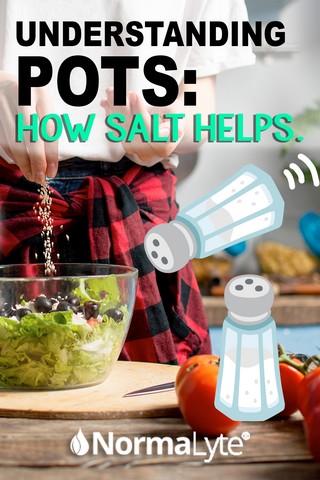Postural Orthostatic Tachycardia Syndrome (POTS) can be a challenging condition to manage. One common recommendation for POTS patients is to increase their salt intake. But Why Does Salt Help Pots? This article explores the science behind this connection and discusses various ways to increase sodium levels for effective symptom management.
Salt’s Role in Managing POTS Symptoms
Doctors often advise POTS patients to increase their sodium intake, sometimes recommending up to 25 grams of salt per day (equivalent to 10,000mg of sodium). This advice stems from the understanding that increased sodium helps increase blood volume, a crucial factor in mitigating POTS symptoms. But before delving deeper, it’s important to clarify the distinction between salt and sodium.
Salt vs. Sodium: A Key Difference
While often used interchangeably, salt and sodium are distinct. Sodium is a mineral, while salt is a compound composed of sodium and chloride. All salt contains sodium, but not all sodium is salt. This distinction is important when interpreting doctor’s recommendations. 10 grams of salt, for instance, equates to 4,000mg of sodium.
Effective Ways to Increase Salt Intake
There are several methods to boost sodium levels for POTS management:
Dietary Changes
-
Salty Snacks: Incorporating naturally salty foods like pickles and pretzels can contribute to daily sodium goals.
-
Salt Your Food: Liberally salting meals is encouraged for POTS patients.
Supplementation
-
Oral Rehydration Salts (ORS): ORS drinks, formulated with a balanced ratio of sodium and glucose, facilitate efficient absorption of both water and sodium, crucial for hydration and blood volume.
-
Salt Capsules: For individuals struggling to meet their sodium needs through diet alone, salt capsules offer a convenient and concentrated source of sodium.
The Science Behind Salt and POTS
The positive impact of increased salt intake on POTS symptoms is supported by scientific research. A 2020 study demonstrated that a high-salt diet effectively increases blood volume, maintains higher standing blood volume, and lowers heart rate in POTS patients. This study highlighted the significant role of sodium chloride supplementation in managing POTS symptoms, particularly in children.
Conclusion: Salt as a Cornerstone of POTS Management
Increasing salt intake is a widely recognized and research-backed strategy for managing POTS. By increasing blood volume, salt helps alleviate symptoms and improve the quality of life for many individuals with this condition. Consult with your doctor to determine the appropriate sodium intake and strategies for your specific needs. Remember, you are not alone in navigating the challenges of POTS. With the right approach, including optimizing your salt intake, effective symptom management is achievable.
